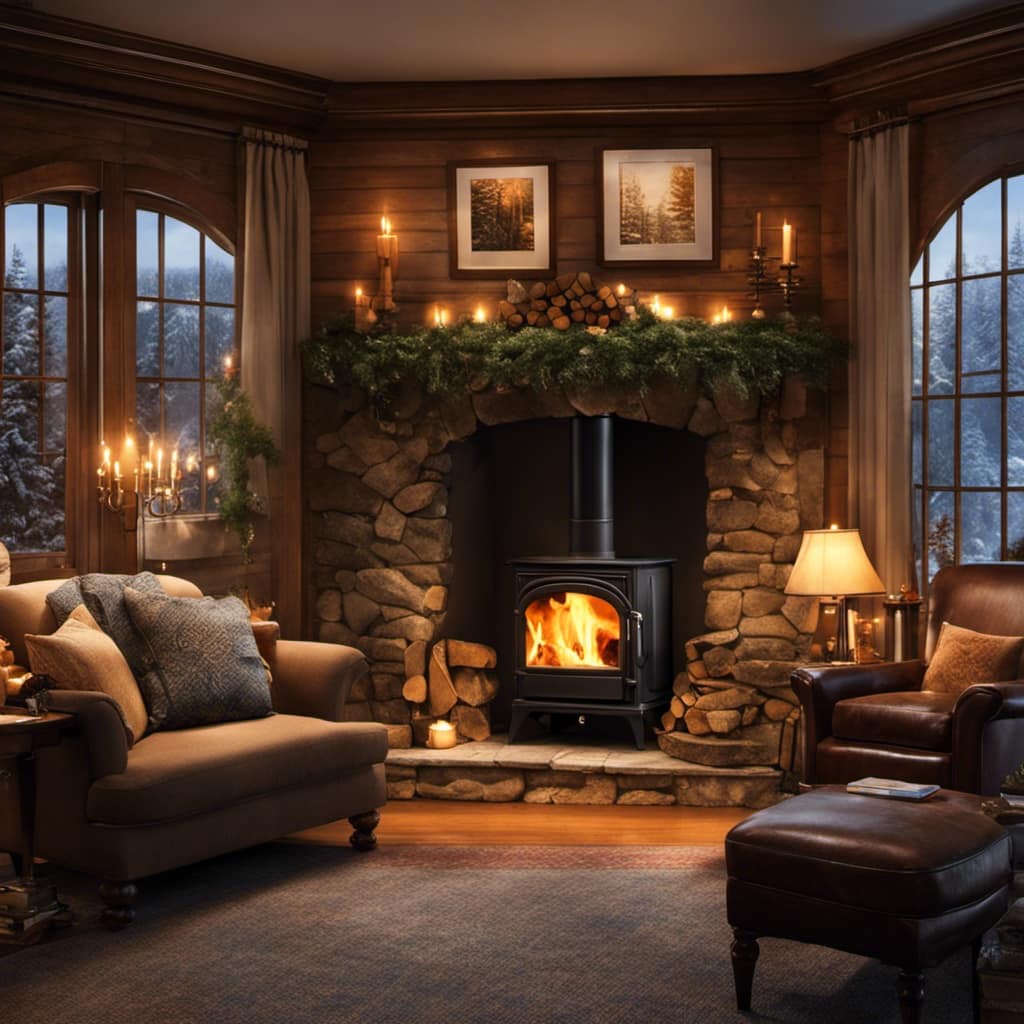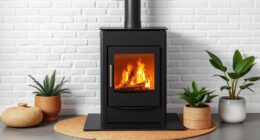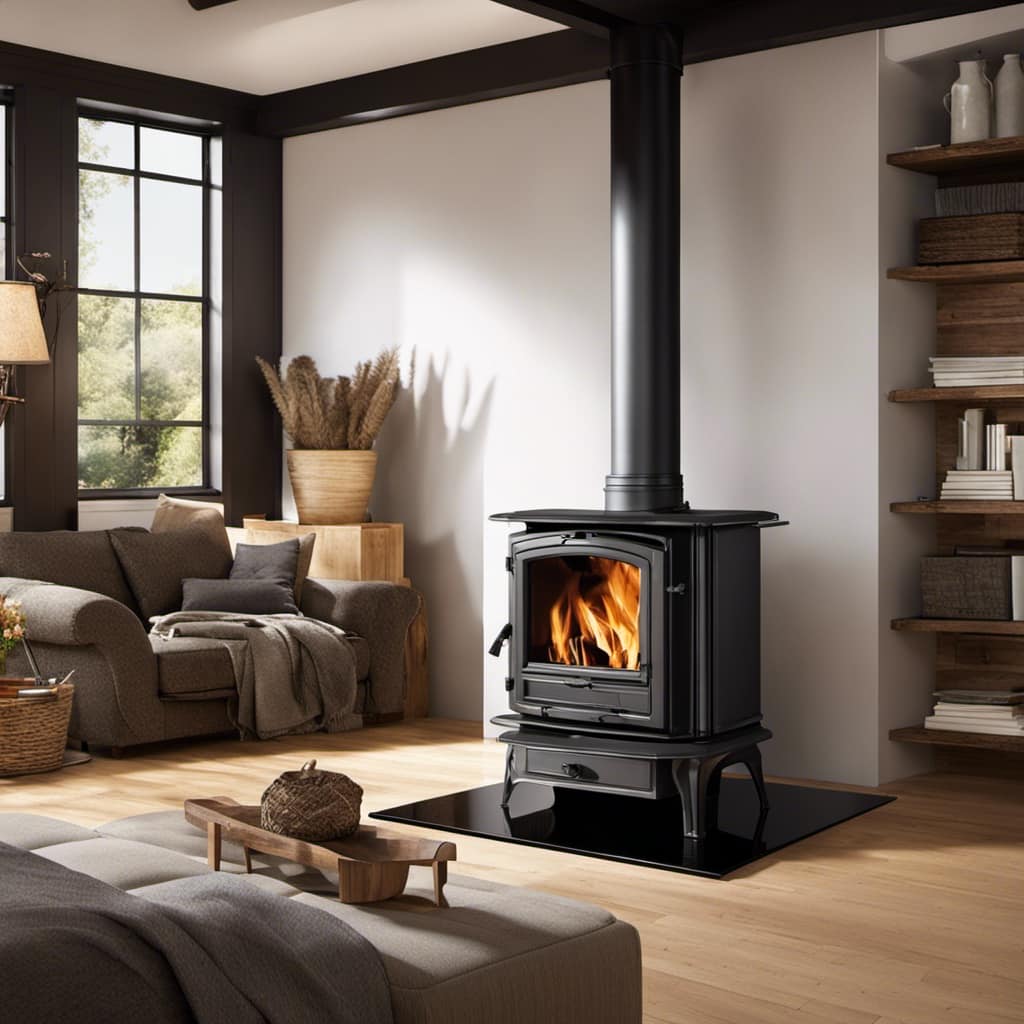
I have found the key to keeping wood stove glass doors perfectly clean, and let me tell you, it’s a total game-changer. Say goodbye to all fingerprints and dirt. Now, you can enjoy a clear, flawless view of the flickering flames.
In this article, I’ll share with you the techniques, products, and maintenance tips that will have your glass doors looking brand new. Get ready to say goodbye to dirty glass and hello to a cozy, spotless fire.
Key Takeaways
- Regularly clean the glass doors to maintain efficiency and safety of the wood stove
- Use non-abrasive cleaners specifically designed for cleaning glass doors on wood stoves
- Test natural alternatives like vinegar and baking soda on a small area first to avoid damaging the glass
- Inspect and replace the door gasket regularly to prevent air leaks and ensure proper functioning of the wood stove
Understanding the Importance of Regular Cleaning
I can’t stress enough the importance of regularly cleaning your glass doors on a wood stove. Deep cleaning is essential to maintain the efficiency and safety of your stove.
Over time, soot and creosote build-up can accumulate on the glass, obstructing the view of the fire and reducing heat transfer. To remove stubborn stains, start by letting the stove cool down completely. Then, mix a solution of warm water and a mild detergent.
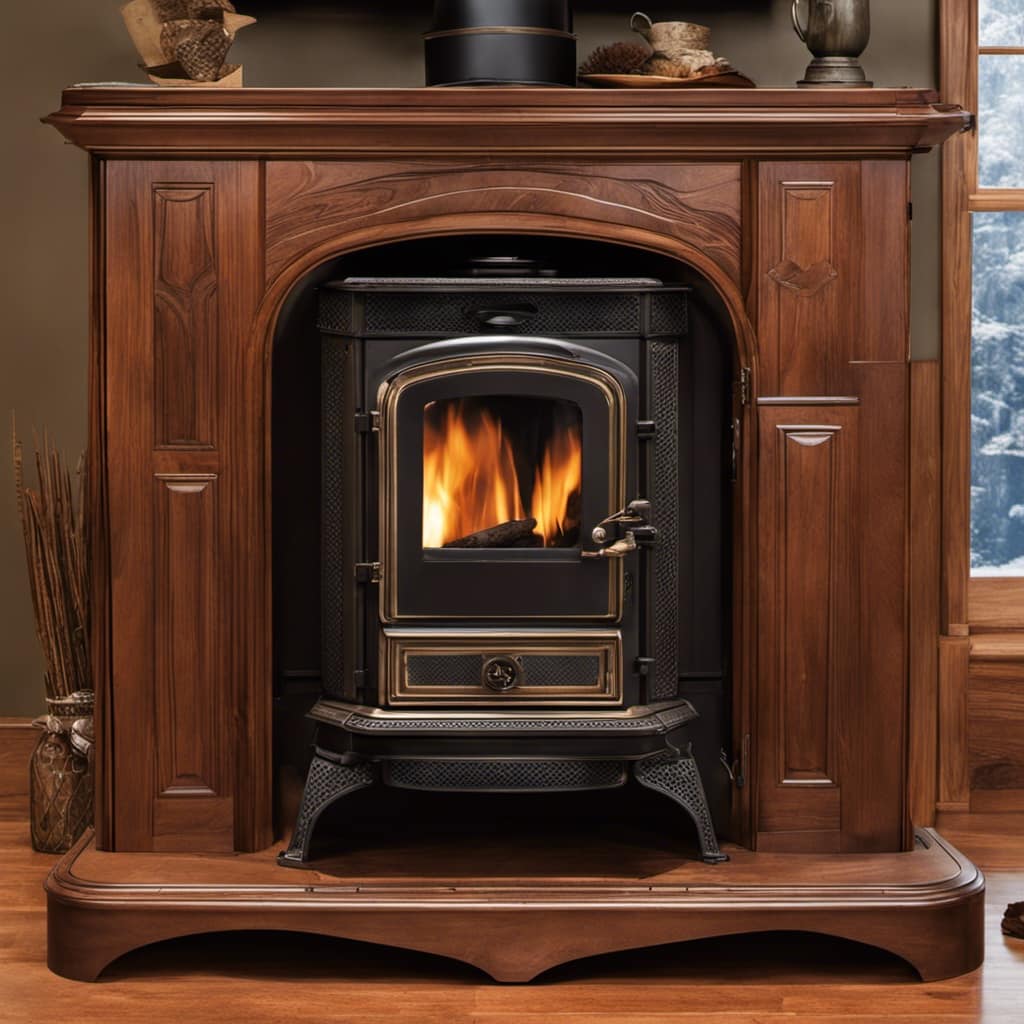
Apply the solution to the glass and let it sit for a few minutes. Next, use a non-abrasive sponge or cloth to scrub the glass gently in circular motions. Rinse with clean water and dry with a soft cloth.
Regular deep cleaning will ensure your glass doors stay clear, allowing you to enjoy the cozy ambiance of your wood stove.
Choosing the Right Cleaning Products
When cleaning glass doors on a wood stove, it’s important to choose the right cleaning products for optimal results. There are various cleaning solutions available in the market specifically designed for this purpose. These solutions are formulated to effectively remove soot, grime, and other residues that accumulate on the glass surface.
It’s recommended to use a non-abrasive cleaner to avoid scratching the glass. Additionally, some natural alternatives can be used as cleaning solutions. For example, a mixture of vinegar and water can be effective in removing light stains and smudges from the glass. Baking soda mixed with water can also be used as a gentle abrasive cleaner. However, it’s important to test these natural alternatives on a small area first to ensure they don’t damage the glass.
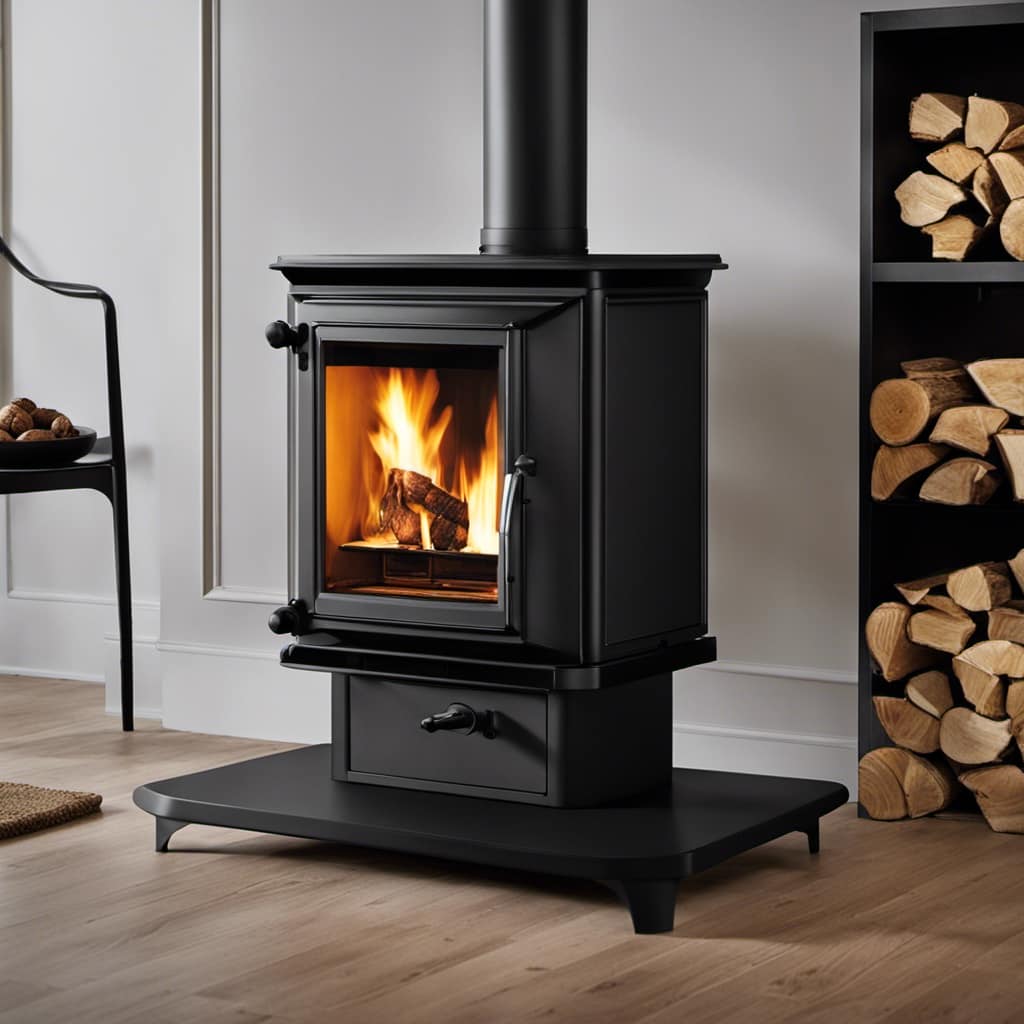
Overall, choosing the right cleaning products is essential in maintaining clean and clear glass doors on a wood stove.
Proper Techniques for Cleaning the Glass Doors
To clean the glass doors on a wood stove, I gently wipe the surface with a microfiber cloth and a solution of vinegar and water. This technique ensures that the glass is thoroughly cleaned without causing any damage.
Here are some additional techniques and tools that can be helpful in maintaining the cleanliness of your wood stove’s glass doors:
- Use a soft-bristled brush to remove any stubborn residue or soot buildup.
- Avoid using abrasive materials or harsh chemicals that can scratch or damage the glass.
- Regularly inspect the door gasket and replace it if necessary to prevent air leaks.
- Consider using a glass cleaner specifically designed for wood stoves to achieve a streak-free shine.
- Install a stove fan or blower to improve air circulation and reduce the amount of soot that accumulates on the glass.
Preventing Buildup and Stains on the Glass
To prevent buildup and stains on the glass, I regularly wipe it down with a mixture of vinegar and water. This solution effectively removes dirt and grime, leaving the glass clean and shiny. However, preventing scratches on the glass is equally important. I always use a soft cloth or sponge to avoid scratching the surface. Additionally, I avoid using abrasive cleaners or scrub brushes that can cause damage. When dealing with stubborn stains, I have found that a paste made from baking soda and water works wonders. I apply it to the stained area, let it sit for a few minutes, and then gently scrub it away. This method effectively removes even the toughest stains without causing any harm to the glass.
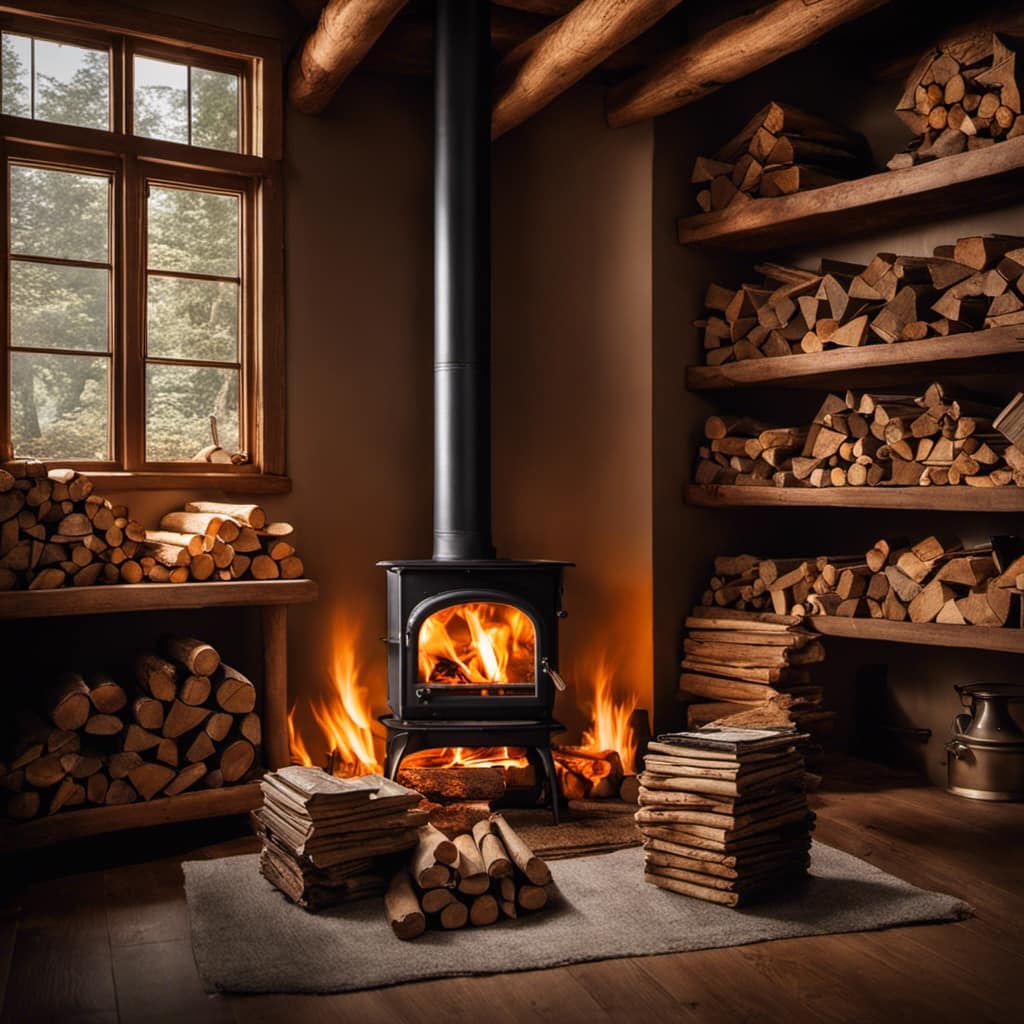
| Preventing Scratches | Removing Stubborn Stains |
|---|---|
| Use a soft cloth or sponge | Make a paste with baking soda and water |
| Avoid abrasive cleaners or scrub brushes | Apply the paste to the stained area |
| Be gentle when cleaning | Let it sit for a few minutes |
| Regularly check for scratches | Gently scrub away the stain |
Maintenance Tips for Long-Term Cleanliness
I make sure to regularly clean and maintain my glass doors on the wood stove to ensure long-term cleanliness. It’s important to keep the glass doors in top condition to maintain shine and remove stubborn stains.
Here are some maintenance tips that I find helpful:
-
Use a specialized glass cleaner: I prefer using a glass cleaner specifically designed for wood stoves. It effectively removes soot and grime without damaging the glass.
-
Clean regularly: I make it a habit to clean the glass doors at least once a week to prevent the buildup of stubborn stains.
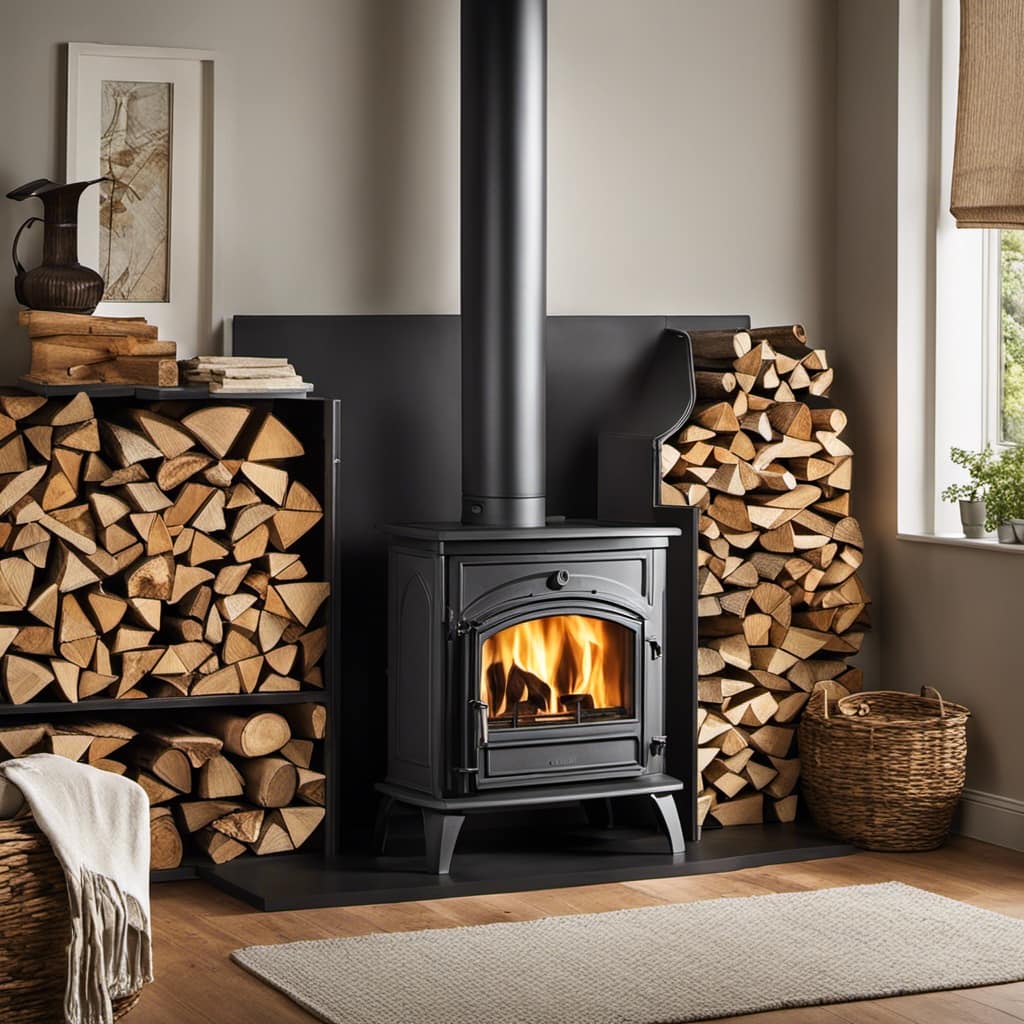
-
Use a soft cloth or sponge: When cleaning the glass, it’s crucial to use a soft cloth or sponge to avoid scratching the surface.
-
Avoid abrasive materials: I never use abrasive materials like steel wool or harsh scrub brushes as they can scratch the glass.
-
Apply a glass protectant: To maintain the shine and protect the glass, I apply a glass protectant that creates a barrier against soot and stains.
Conclusion
In conclusion, keeping the glass doors of a wood stove clean is vital for maintaining its efficiency and appearance.

By regularly cleaning with appropriate products and using proper techniques, you can prevent buildup and stains on the glass.
Additionally, implementing maintenance tips for long-term cleanliness will ensure that your wood stove continues to shine like a polished gem, allowing you to enjoy the warmth and beauty it brings to your home.
Growing up surrounded by the vast beauty of nature, Sierra was always drawn to the call of the wild. While others sought the comfort of the familiar, she ventured out, embracing the unpredictable and finding stories in the heartbeat of nature.
At the epicenter of every remarkable venture lies a dynamic team—a fusion of diverse talents, visions, and passions. The essence of Best Small Wood Stoves is crafted and refined by such a trio: Sierra, Logan, and Terra. Their collective expertise has transformed the platform into a leading authority on small wood stoves, radiating warmth and knowledge in equal measure.






